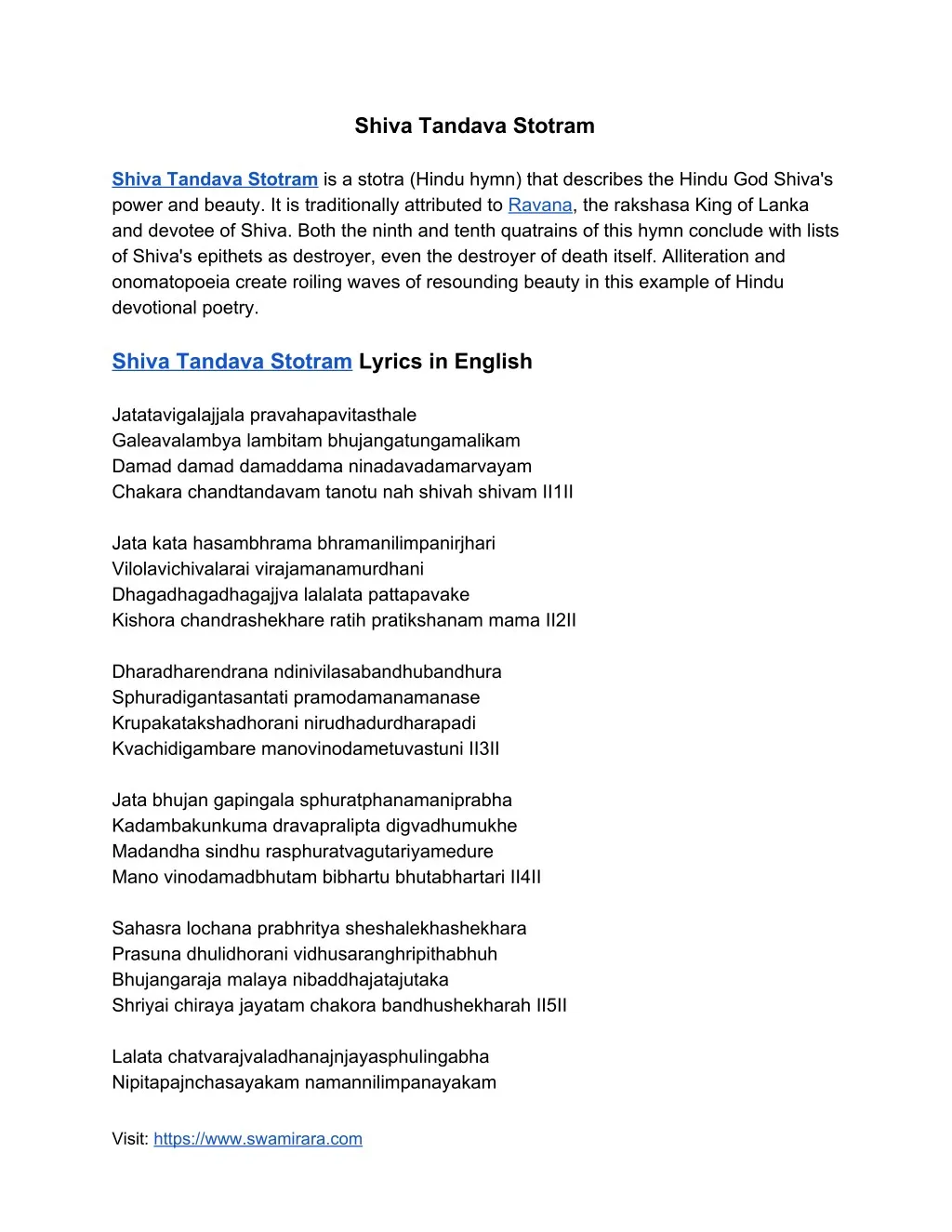
Various Shiva temples in South India depict the dancing Nataraja. Shiva as Nataraja or Krishna dancing dancing the Tandava is a recurring theme in the Chola period bronzes. The 108 karanas of Tandava have inspired Shiva sculptures of the 1st-millennium BCE, particularly the Tandava style which fuses many of these into a composite image found at the Nataraja temple of Chidambaram. In the Krishna Tandava in Raslila performance of Manipuri dance is graceful yet with swift movement and acrobatic gestures. The Manipuri dance is categorized as either "Tandava" (vigorous, usually go with Shiva, Shakti or Krishna as warrior-savior themed plays) or lasya (delicate, usually go with love stories of Radha and Krishna). Bharatanatyam and Kuchipudi have variants of Krishna dancing his Tandava on Kaliya. In Kathak dance three types of Tandavas are generally used, they are, Krishna Tandava, Shiva Tandava and Ravana Tandava, but sometimes a fourth variety - Kalika Tandava, is also often used. Īccording to Jain traditions, Indra is said to have performed the Tandava in honour of Rishabha (Jain tirthankar) on the latter's birth. Purandara Dasa calls the dancing Krishna ("Nritya Krishna") as "Tandava Krishna".
#Shiva tandava stotram telugu series#
King Chikka Devaraja (the fourteenth maharaja of the Kingdom of Mysore) minted a series of gold coins called "Devaraja the image of dancing Krishna" ( tandava krishnamurti devaraja) to commemorate his coronation. The Bhagavata Purana talks of Krishna dancing his Tandava on the head of the serpent Kaliya. Ganesha, the son of Shiva, is depicted as Ashtabhuja tandavsa nritya murtis (Eight armed form of Ganesha dancing the Tandava) in temple sculptures. From a Bhagavata Purana manuscript, c. 1640. Krishna dancing over the subdued Kāliya and his wives Naginis asking Krishna for his mercy. Shiva Tandava Stotram is a stotra (Hindu hymn) that describes Shiva's power and beauty. The Shivapradosha stotra says when Shiva performs the Sandhya Tandava, the other gods like Brahma, Vishnu, Sarasvati, Lakshmi and Indra play musical instruments and sing Shiva's praises. When Sati (first wife of Shiva, who was reborn as Parvati) gave up her life in Daksha's sacrifice, Shiva is said to have performed the Rudra Tandava to express his grief and anger. The Hindu scriptures narrate various occasions when Shiv performed the Tandava. There are two types of Lasya, Jarita Lasya and Yauvaka Lasya. Some scholars consider Lasya to be the feminine version of Tandava. The dance performed by Shiva's wife Parvati in response to Shiva's Tandava is known as Lasya, in which the movements are gentle, graceful and sometimes erotic.

The Natya Shastra portrays Shiva narrating about the various aspects of the dance to the god Brahma. Some scholars consider that Tandu himself must have been the author of an earlier work on the dramatic arts, which was incorporated into the Natya Shastra.

Tandava takes its name from Tandu ( taṇḍu), the attendant of Shiva, who instructed Bharata (author of the Natya Shastra) in the use of Angaharas and Karanas modes of the Tandava at Shiva's order. "King of dance" ) is considered to be supreme lord of dance. In Shaiva Siddhanta tradition, Shiva as Nataraja (lit. While the Rudra Tandava depicts his violent nature, first as the creator and later as the destroyer of the universe, even of death itself, the Ananda Tandava depicts him as joyful. Shiva's Tandava is described as a vigorous dance that is the source of the cycle of creation, preservation and dissolution. The types of Tandava found in the Hindu texts are: Ananda Tandava, Tripura Tandava, Sandhya Tandava, Samhara Tandava, Kali (Kalika) Tandava, Uma Tandava, Shiva Tandava, Krishna Tandava and Gauri Tandava. Performed in a violent mood, the dance is called Raudra or Rudra Tandava. Performed with joy, the dance is called Ananda Tandava. Tandava, as performed in the sacred dance-drama of India, has vigorous, brisk movements.


 0 kommentar(er)
0 kommentar(er)
